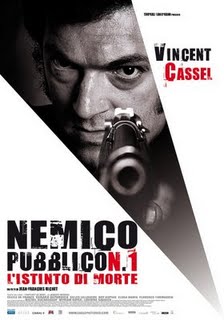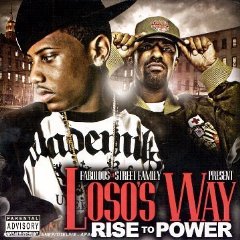MAINSTREAM MASTERPIECE
JOHN KENNETH MUIR ON THE UNTOUCHABLES John Kenneth Muir
John Kenneth Muir continues his weekly look at select
Brian De Palma films with a wonderful analysis of
The Untouchables, which he calls "De Palma's mainstream masterpiece," it being "a visual exercise in mythbuilding." Muir characterizes
The Untouchables as a war film, stating, "On the surface, the brutal struggle in
The Untouchables appears to be one regarding law enforcement, but the movie's tone and visuals make it plain that this is not entirely the case. On the contrary," Muir continues, "this is total war, a fact De Palma makes plain via cross-cutting. Early in the film, he cross-cuts between Capone decrying violence as 'not good business' and then a scene involving a little girl murdered in what, essentially, is a terrorist bombing of a local Chicago saloon."
"ODESSA STEPS" HOMAGE MUCH MORE THAN A "STUNT"Muir is perhaps most inspired in his analysis of De Palma's improvised train station set piece:
Again, this sequence is likely the demarcation point where some people will "get" and appreciate De Palma, and others will simply insist that he is a particularly gifted "thief." For in concept and execution, the staircase scene of The Untouchables is an intricate homage to Sergei Eisenstein's 1925 propaganda classic, The Battleship Potemkin. In that film, the famous "Odessa Steps" sequence dramatized a massacre conducted by the Tsarist Regime, set atop a wide staircase. Civilians were brutally murdered in this bloody sequence, as Cossacks killed men, women and children. Famously, a baby carriage was depicted rolling down the staircase.
In original context, the Odessa Steps sequence was meant to demonize the Imperial Regime, to expose the fact that there was no depth to which it would not sink to hold onto to power in Russia. The scene is so famous in cinema history that some people have apparently believed that there was a massacre on the Odessa Steps even though the incident was a fictional one concocted for the film.
Those who accuse De Palma of lifting the Odessa Steps sequence from The Battleship Potemkin should take one extra step -- beyond that of accusation -- and ask themselves why? What purpose does it serve to feature a similar sequence here, in this movie?
On one hand, we can certainly point to the deliberate homage and intertextuality we see throughout De Palma's canon. But furthermore, there's a reflexive quality to this reference in The Untouchables. To wit: the battle for capitalist control of Chicago is occurring, roughly, in the same time period that The Battleship Potemkin was made and distributed (circa 1925 - 1930). In other words, by cutting and shooting a sequence just like the Odessa Steps, De Palma is actually reflecting something that the characters of the time might have themselves conceivably understood or known about.
Much more importantly, however, De Palma has created a thematic relative of Potemkin; a kind of "pop" form of propaganda; a heroic myth elevating the G-Men in stature and deriding a corrupt system and the criminals -- like Capone -- who exploited it (the capitalist equivalent of the Tsarists).
De Palma's point -- captured beautifully in the slow-motion shoot-out -- is that Capone's Regime (like that of the Cossacks...) boasts no moral compunction about the murder of the innocent. It will hold onto control any way it can, as we have seen in the corner saloon bombing and now with the imperiled baby carriage. Ness's task is much more difficult: he must eliminate the entrenched, powerful bad guys (the hench-men of Capone) and defend the innocent simultaneously. Remember how that grieving mother told Ness to get Capone? Well, here Ness lands in an even more urgent variation of that scene: finally in the position to prevent the death of an innocent at the same time that he takes down the guilty.
So, yes, De Palma pays tribute to Eisenstein's shock cutting in the famous staircase battle, but he has done two other important things as well. First, he has raised audience "ire" over Capone's actions in the self-same manner as Eisenstein did in regards to the Tsarists;" exposing" a corrupt regime in the process. And secondly, he has re-purposed the "lifted" sequence so as to make a point about the nature of the all-out battle Ness is fighting.
Amazingly, De Palma crafts an action sequence in the very film language appropriate to the era of his film, the 1920s-1930s. In his review, critic Hal Hinson called the staircase shoot-out scene De Palma's "greatest stunt," only-half impressed, but I suggest that given the context, given the reflexivity, given the re-purposing of a classic sequence for a like thematic purpose, it is much more than a stunt. This is De Palma conceiving and deploying brilliant visuals to chart for audiences the epic nature of the Capone/Ness conflict.
 Gerard Butler, who had been set to play Jimmy Malone in Brian De Palma's planned prequel to The Untouchables, was asked about the status of Capone Rising in an interview in the August 2009 issue of Total Film. Butler replied, "I've no idea. It's on the backburner somewhere - it fell by the wayside when we lost our Al Capone. It was actually one of the best scripts I've read in a long time, so it's kind of sad." (The article is edited to suggest that Butler was definitely referring to Nicolas Cage when he spoke of losing "our Al Capone," but he is not quoted as saying anything about Cage, so he could have been referring to another unnamed actor.) Butler then said something we've been hearing him repeat since he signed on to the project: "It was actually one of the best scripts I've read in a long time, so it's kind of sad." The screenplay was written originally by Brian Koppelman and David Levien, and then revised by David Rabe. Butler was also asked by Total Film is he had been practicing his Sean Connery impersonation. "Nah," Butler replied. "It's a very different entity, this film. It is the Connery role, but the guy was completely different."
Gerard Butler, who had been set to play Jimmy Malone in Brian De Palma's planned prequel to The Untouchables, was asked about the status of Capone Rising in an interview in the August 2009 issue of Total Film. Butler replied, "I've no idea. It's on the backburner somewhere - it fell by the wayside when we lost our Al Capone. It was actually one of the best scripts I've read in a long time, so it's kind of sad." (The article is edited to suggest that Butler was definitely referring to Nicolas Cage when he spoke of losing "our Al Capone," but he is not quoted as saying anything about Cage, so he could have been referring to another unnamed actor.) Butler then said something we've been hearing him repeat since he signed on to the project: "It was actually one of the best scripts I've read in a long time, so it's kind of sad." The screenplay was written originally by Brian Koppelman and David Levien, and then revised by David Rabe. Butler was also asked by Total Film is he had been practicing his Sean Connery impersonation. "Nah," Butler replied. "It's a very different entity, this film. It is the Connery role, but the guy was completely different." 




 Just outside of Baltimore, in Hampden, is a late night coffee house with a bustling art scene called El Rancho Grande.
Just outside of Baltimore, in Hampden, is a late night coffee house with a bustling art scene called El Rancho Grande.  The poster image at left is for a two-part film series by Jean-Francois Richet that tells the story of real-life French gangster Jacques Mesrine. The first film is called Mesrine: Killer Instinct, and stars Vincent Cassel. According to
The poster image at left is for a two-part film series by Jean-Francois Richet that tells the story of real-life French gangster Jacques Mesrine. The first film is called Mesrine: Killer Instinct, and stars Vincent Cassel. According to  31-year-old Jake Goldberger's feature debut, Don McKay, won him the Best Director award at Cincinnati's
31-year-old Jake Goldberger's feature debut, Don McKay, won him the Best Director award at Cincinnati's  P.S. Just found out that Fabolous and Street Family put out a collection in 2006 titled Loso's Way: Rise To Power. So they did the prequel before the sequel-- go figure.
P.S. Just found out that Fabolous and Street Family put out a collection in 2006 titled Loso's Way: Rise To Power. So they did the prequel before the sequel-- go figure. "Nobody benefits when critics are as apolitical as the films they criticize," writes critic David Sterritt in regards to the critical praise heaped on Kathryn Bigelow's The Hurt Locker, currently making its way in theaters throughout the U.S. The critical consensus does seem to be that Bigelow's film lacks any political viewpoint (is this even truly possible?), and that it is all the better for it. There have been a couple of negative reviews of The Hurt Locker posted at Andrew Breitbart's conservative-minded
"Nobody benefits when critics are as apolitical as the films they criticize," writes critic David Sterritt in regards to the critical praise heaped on Kathryn Bigelow's The Hurt Locker, currently making its way in theaters throughout the U.S. The critical consensus does seem to be that Bigelow's film lacks any political viewpoint (is this even truly possible?), and that it is all the better for it. There have been a couple of negative reviews of The Hurt Locker posted at Andrew Breitbart's conservative-minded 
 Composer Ryuichi Sakamoto received the Ordre national de la Legion d’honneur (the National Order of the Legion of Honor) last Thursday, according to reports from
Composer Ryuichi Sakamoto received the Ordre national de la Legion d’honneur (the National Order of the Legion of Honor) last Thursday, according to reports from 